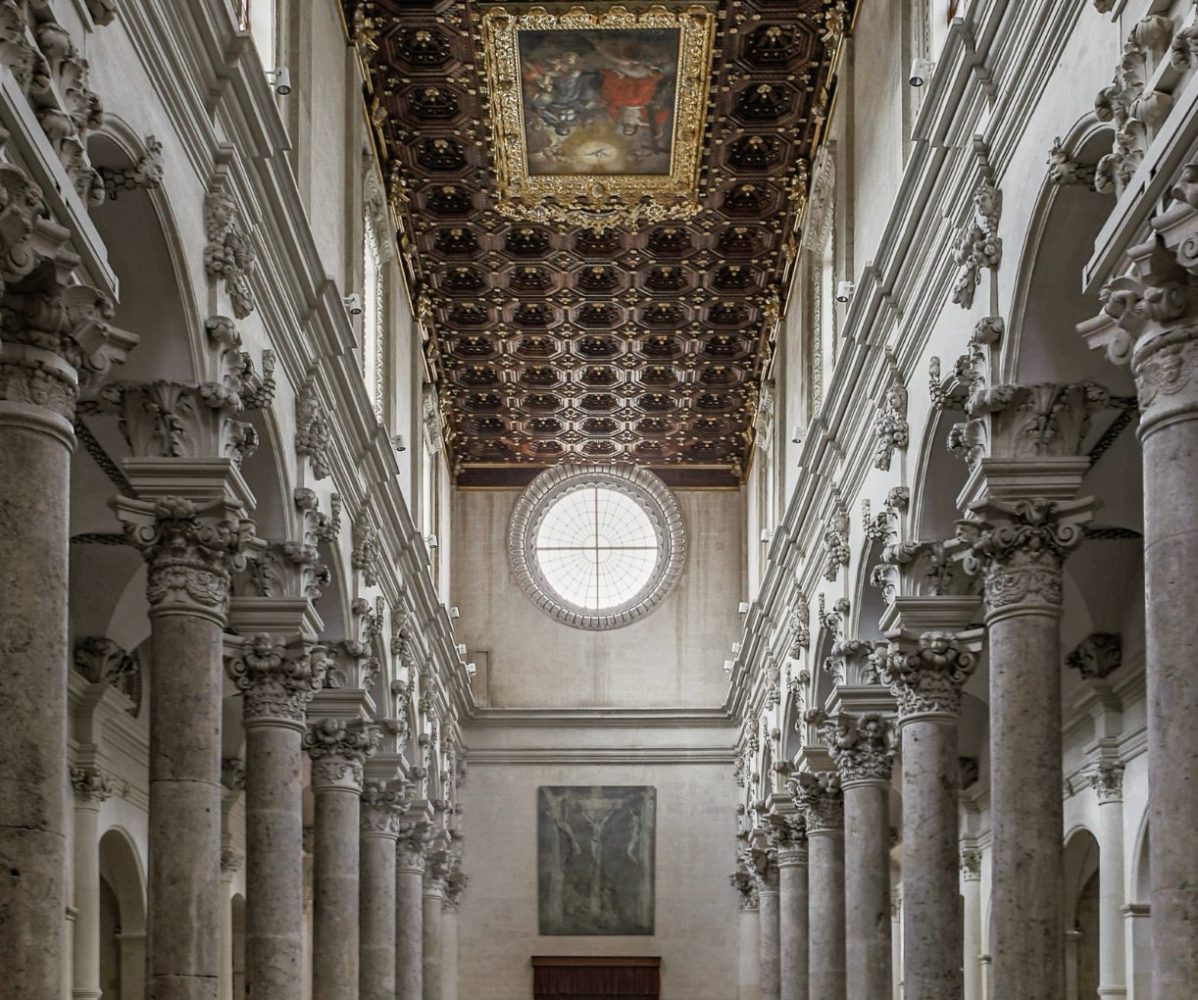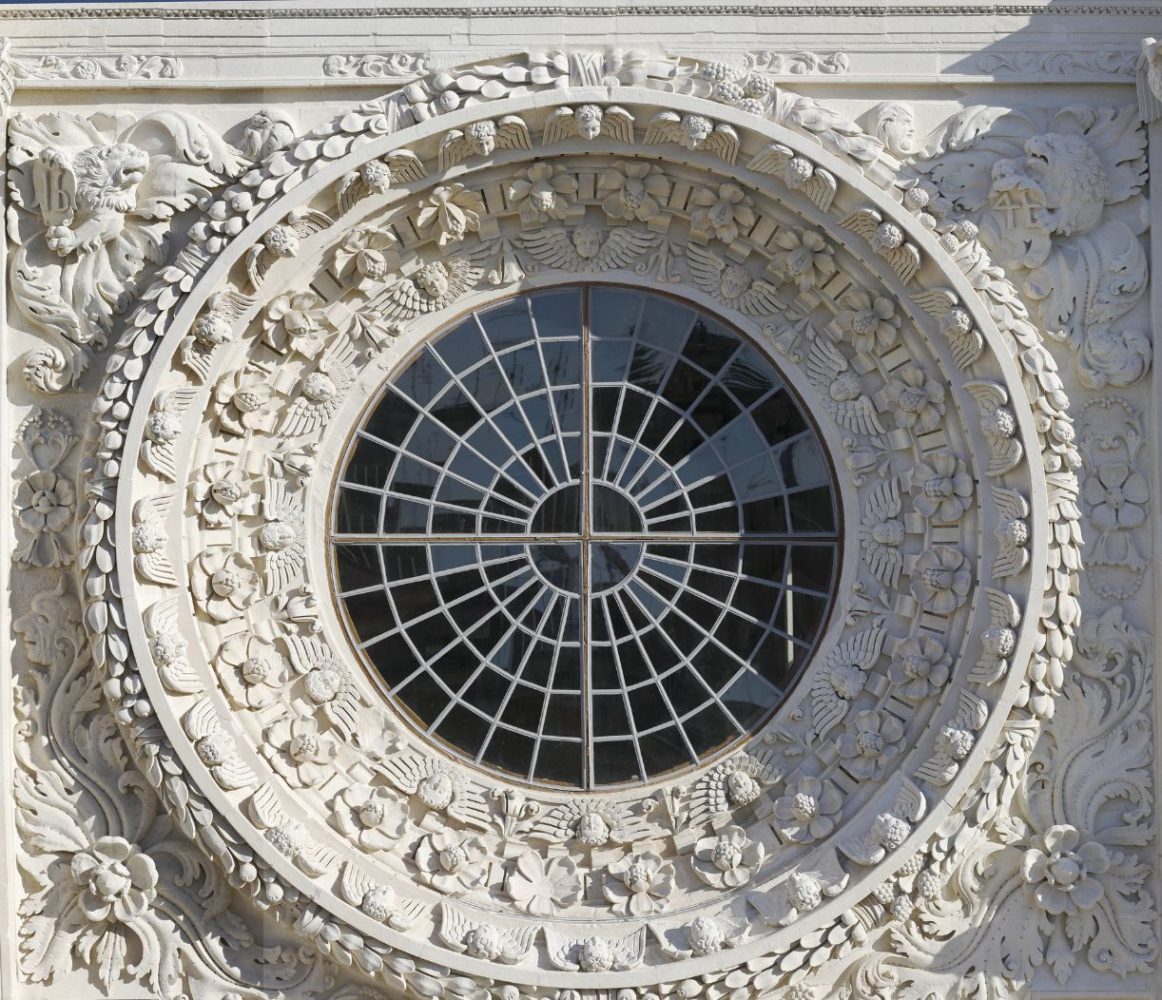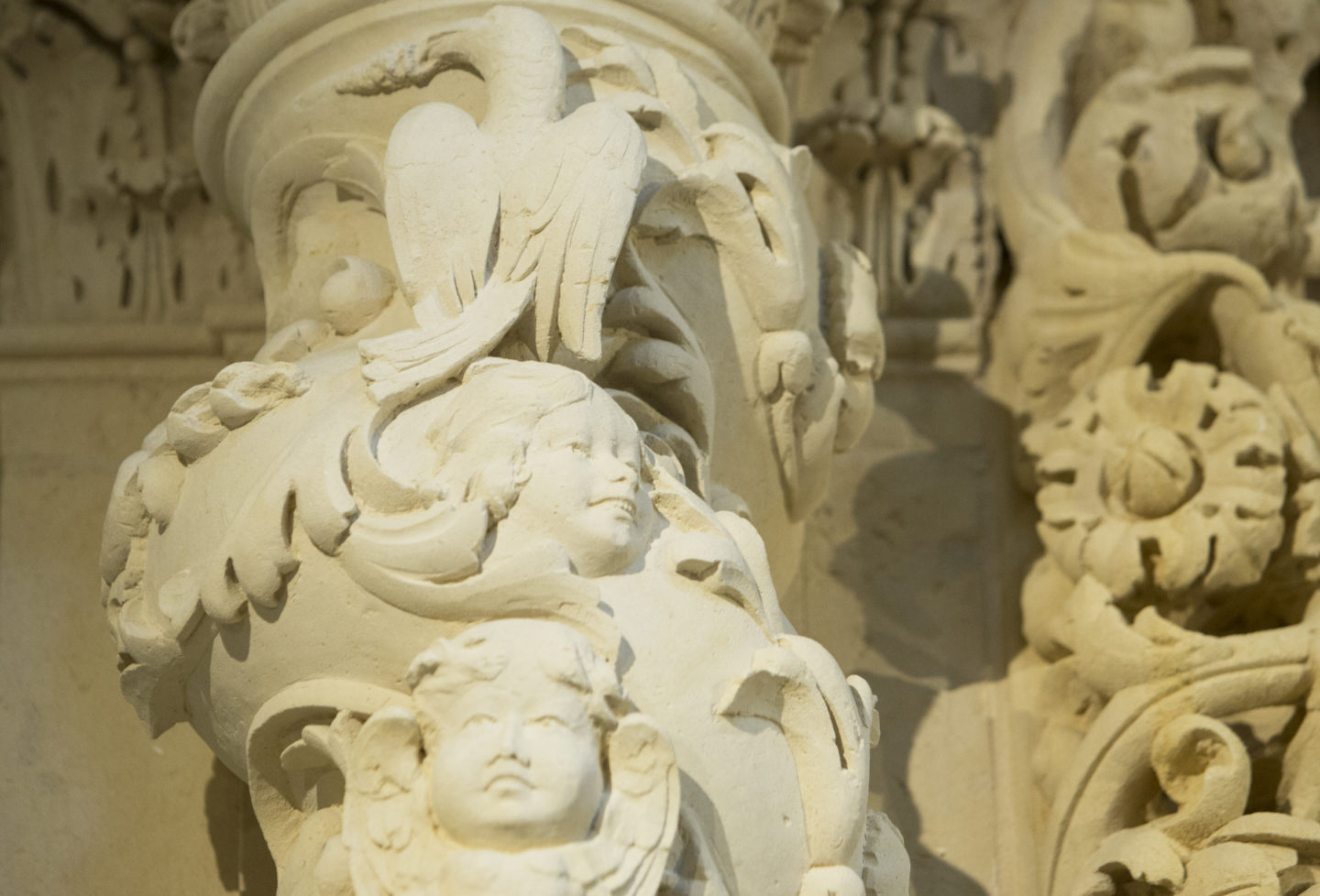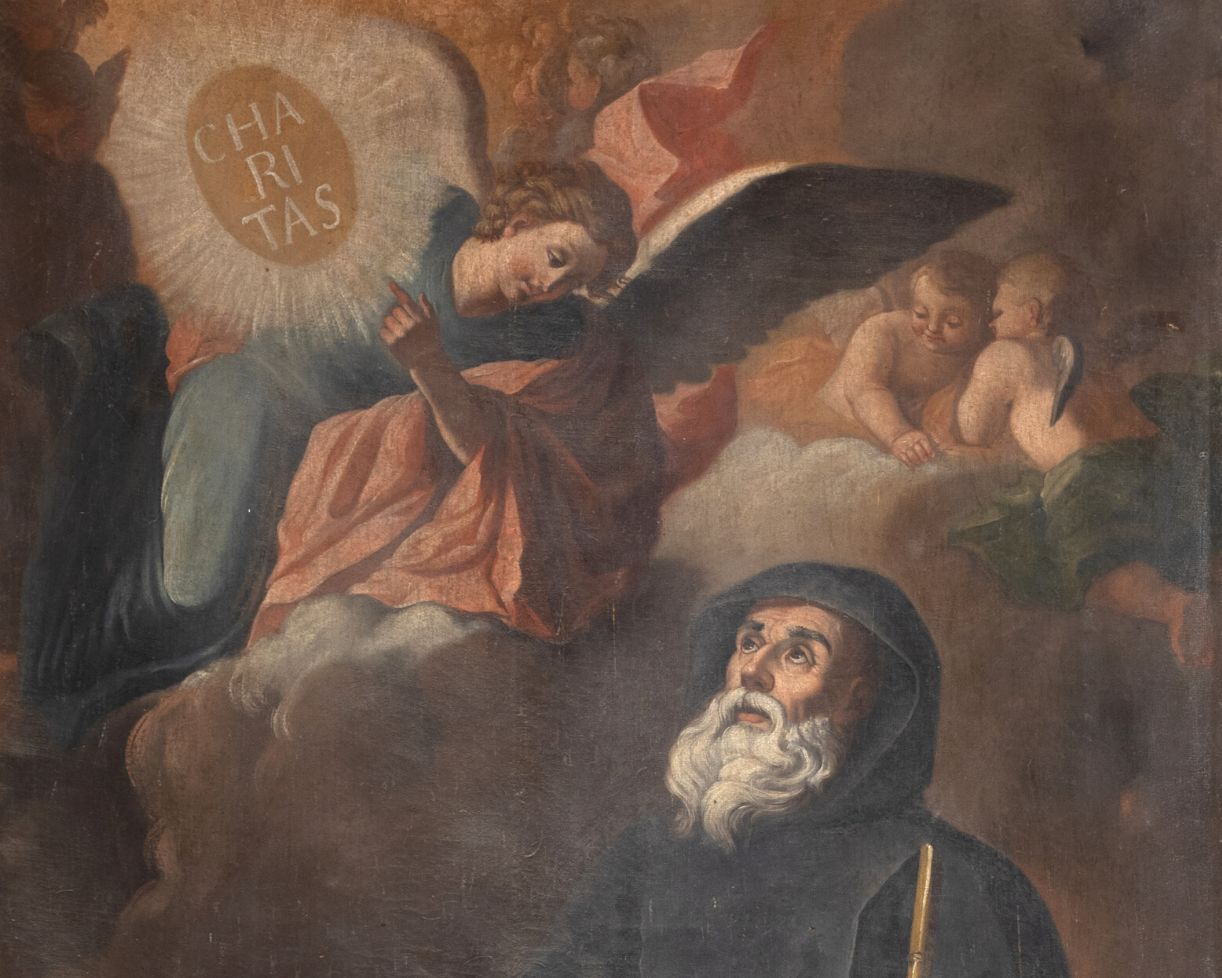Santa Croce, jewel of Lecce Baroque
FAMOUS FOR THE DECORATIVE RICHNESS OF THE CENTRAL ROSE WINDOW, THE BASILICA OF SANTA CROCE, THROUGH A RICH REPERTOIRE OF IMAGES, RECALLS THE TRIUMPH OF CHRISTIANITY. THE VISITOR IS AMAZED BY THE ABUNDANCE OF THE FAÇADE IN WHICH FIGURES OF MEN AND BEASTS CONTRAST CELESTIAL FIGURES SUCH AS ANGELS AND SAINTS.
Buy LeccEcclesiae tickets
Historical and architectural notes
Arriving in Lecce in the XIV century, the Celestines built Santa Croce Church to house the relics of the True Cross, near the Castle of Lecce. The ancient church was demolished during the enlargement works of the Castle on request of Charles V during the mid sixteenth century. The present structure was built between 1549 and 1646 in the ancient area of San Martino, which during the medieval age housed the Giudecca after the Jewish expulsion from the Naples Reign in 1541.
The most important sculptors and architects of the Renaissance and Lecce Baroque, such as Gabriele Riccardi, Cesare Penna and Francesco Antonio Zimbalo contributed to the church building and decoration.
The inside structure, illuminated by the sixteenth century dome, shows baroque altars among which the San Francesco’s one stands out for its artistic importance, a work of Francesco Antonio Zimbalo.
Façade
The well-structured church front is the result of interventions that lasted a century. The lower order still keeps a typical sixteenth century and renaissance style, while in the seventeenth century’s upper order the Baroque explodes. Between the two orders, above a constant frieze where in the middle there is the church inscription Templum hoc Deo Crucis vexillo dicatum (To God and to the Cross Banner) runs a majestic stony balustrade. On the top of it, thirteen putto are supported by zoomorphic and anthropomorphic shelves with a great symbolic meaning: eastern soldiers figures, real and fantastic animals, typical of the medieval Bestiaries.
The complicated images are interpreted referring to the Lepanto Battle (1571) which led to the defeat of the Ottoman Empire fleet due to the Holy League and in general to the victory of good against evil, to the triumph of the Cross.
Sant'Oronzo Altar
“1743 / FOI S. RONZU CI NI LEBERAU / DE LU GRA TERRAMOTU, CI FACIU / A BINTI DE FREBARU: TREMULAU / LA CETATE NU PIEZZU, E NO CADIU. / IDDU, IDDU DE CELU LA GUARDAU, / E NUDDU DE LA GENTE NDE PATIU. / E’ RANDE, SANTU! MA DE LI SANTUNI / FACE RAZIE, E MERACULI A MIGLIUNI”
(1743. Sant’Oronzo freed us from the big earthquake that broke on 20th February. The town trembled for a while, but it didn’t fall. He, he, from the sky, looked at it, and none among the population suffered. He is great, Saint. One of the greatest Saints – a holy man – and does favours and miracles to million people).
The interesting painting representing Sant’Oronzo saving Lecce from the earthquake in 1743, is an example of popular devotion, as the Lecce dialect lines testimony telling the event.
Altar of San Francesco da Paola
The careful decorations of the columns of San Francesco da Paola’s altar evoke lace and crochet embroideries, realized by Francesco Antonio Zimbalo between 1614 and 1615.
Particular is the triptyque structure where the Saint is represented in the center of a nineteenth century painting, which replaces a most ancient statue. In the side panels, such as in a tale, 12 reliefs illustrate miracle episodes of the visionary Saint’s life. Some scenes, related to Otranto’s conquest by Turks in 1480, are particularly interesting. In fact people say that San Francesco foresaw Otranto’s fall into Turks hands and worthless were his warnings to the sovereigns of Aragon. Otranto was conquered and remained in Turks hands for a year. Nowadays the Saint is the patron of the town, together with the famous Otranto Martyrs.






